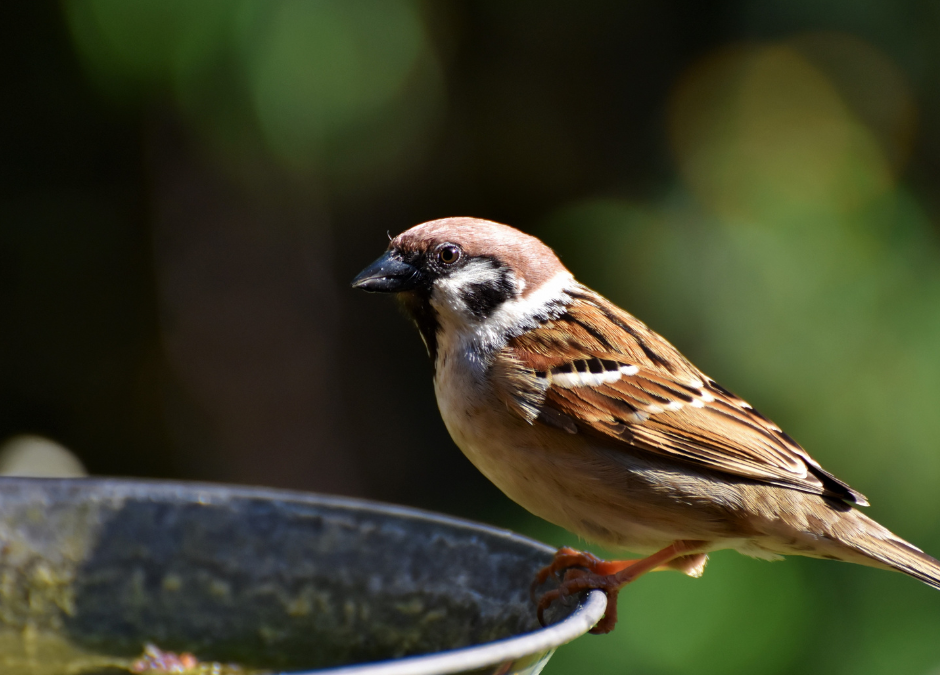By Christiane Goaziou
The Dawn Chorus
In the Seventies and Eighties, when I lived in Sussex, I used to be woken up at 4 am, daily, from the beginning of Spring to the end of July, by the Dawn Chorus.
When the Chorus started, the sound of the birds would get louder and louder; it was magnificent.
The cuckoo, which we hardly hear today, was a real enchantment and sometimes , it was almost too much.
Sadly, today, when people talk of the dawn chorus, it is the sound of birds wakening, blackbird, robin, collared dove, wood pigeon, tits, chaffinch, wren, skylark, black cap, dunnock, song thrush…but the power of the crescendo is missing.
Which birds have declined or are declining?
The house sparrow, the most common of birds, has declined by 71% since the late eighties; so has the dunnock, the ‘cousin’ of the house sparrow. Between 1970 and 1995, the song thrush’s population declined by 54% and more so on farmland when the farming methods changed, and the substantial removal of hedgerows did not help.
I was so happy, the last 2 or 3 weeks when I heard and listened to a song thrush in the field on my way to Westridge Woods and its great repertoire of music cheered me up. Hopefully, the song thrush is starting to improve in numbers.
The starling, one of my favourite birds, hated by some, has declined beyond 50%, thus its RED conservation status. In the 1980’s, in Sussex, the Murmuration’s of the starlings in the early mornings and evenings created amazingly huge ‘clouds’ constantly changing in the sky, confusing predators like the peregrine falcon.
The BTO (The British Trust for Ornithology) states that seventy-five million birds have declined since 1970
What is the cause of the decline of birds?
Loss of natural habitat, which affects birds the most, as habitat is crucial for many reasons: breeding if nests have been destroyed, cover shelter from predators.
Shortage of food in Winter when many birds will perish for lack of food availability but also in the breeding season.
The change in agriculture methods, as previously said, has had a huge impact on the birds. The small family farms have more or less disappeared; now farmers have huge industrial holdings using huge amounts of pesticides and herbicides thus the need to help the birds generally and farmland birds in particular, many nesting on the ground, like the skylark.
Many people think that birds can feed themselves without being helped. That ,indeed, was the case until the Eighties. Sadly, times have changed, and many insects have disappeared
Today , most ornithologists are of the view that birds should be fed all year round. I second that and others should do too .
PS: Swifts, House martins and swallows have been shrinking in numbers too, due to the lack of insects but also the destroying of their habitat. Regarding the habitat, people could put nests boxes or a hollow brick on their house walls. Also in the summer, when it is very hot, the house martins can repair its nest if we leave a bit of earth and water for them in the garden for the repair .

